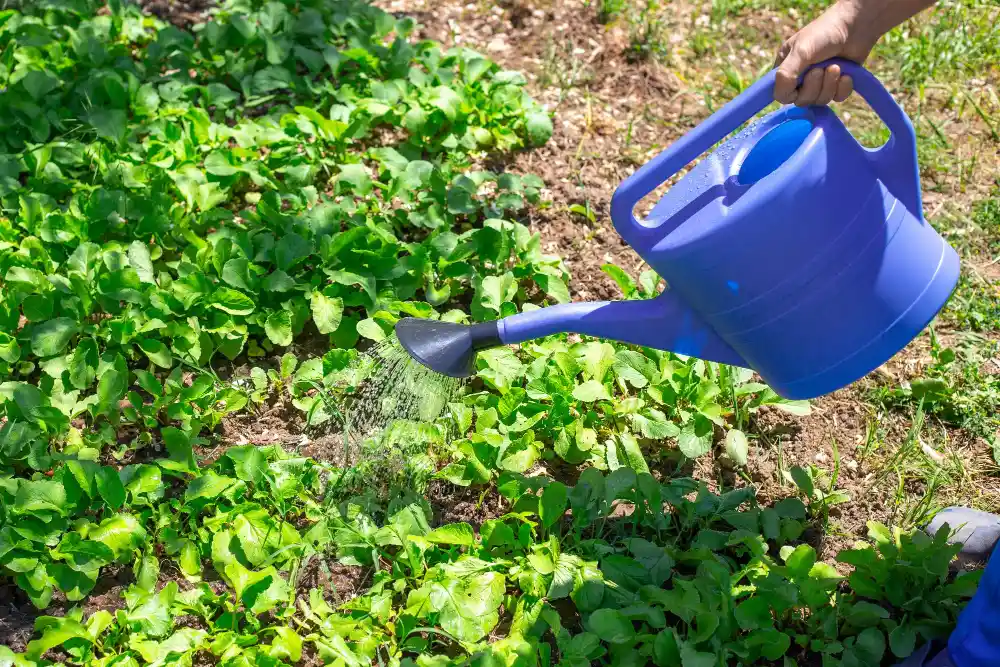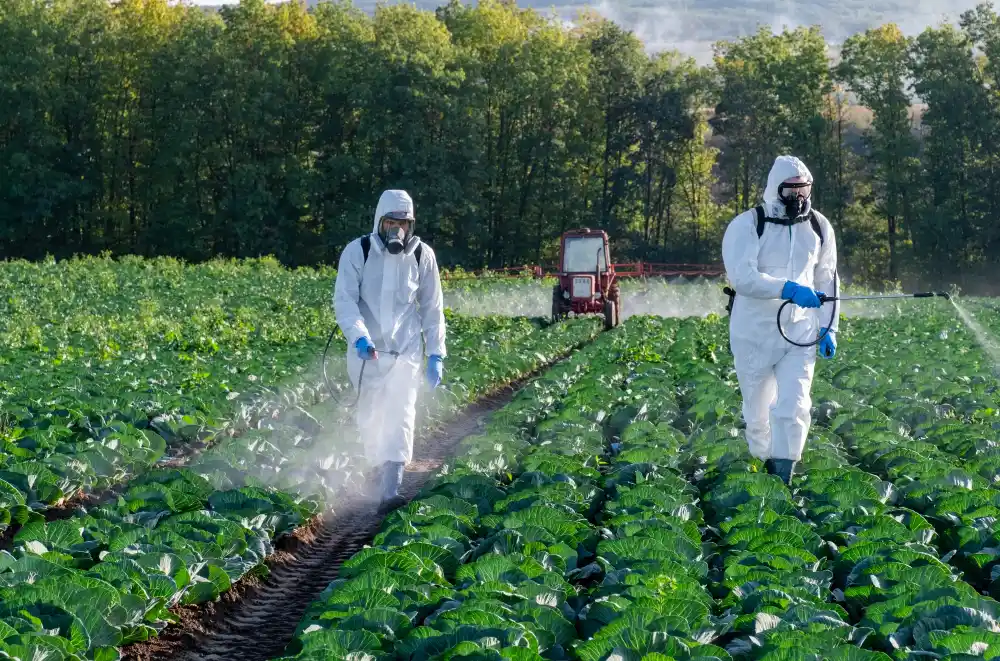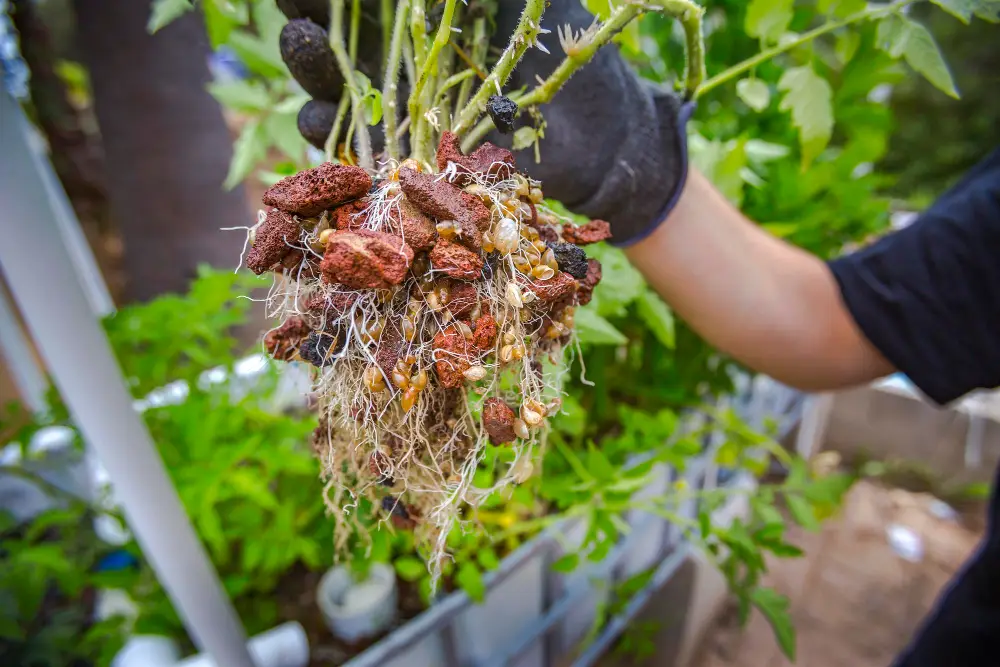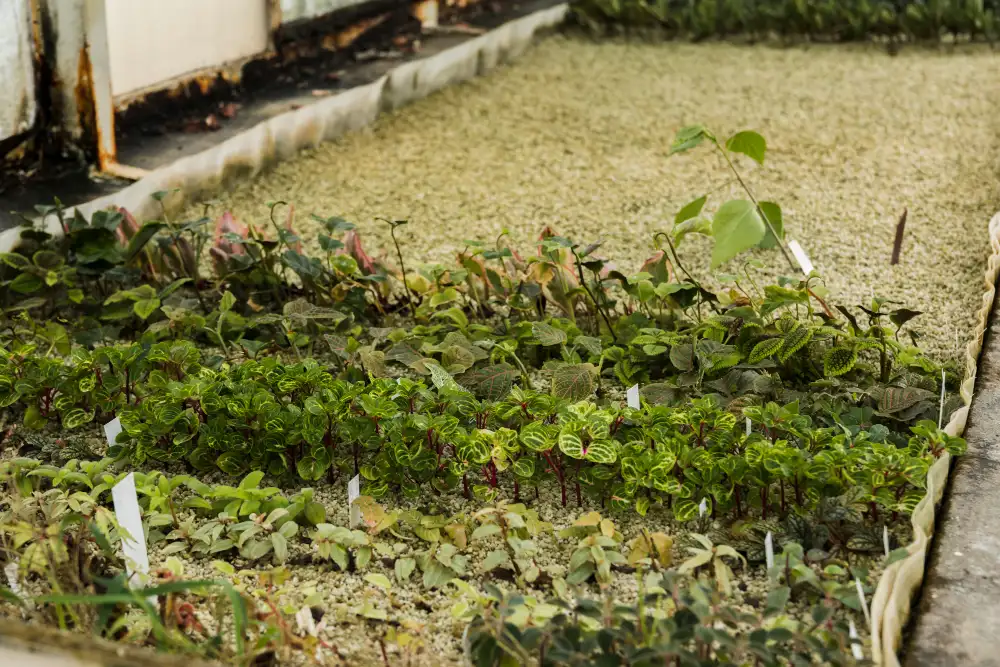When frost creeps in, small missteps turn beds into botched science experiments: mulch piled like volcanoes, thirsty roots drowning in frozen puddles, roses pruned at the worst moment, pots cracking while roots cook-cold by day and knife-cold by night.
Add compacted soil, wind-burned foliage, and sun-starved seedlings, and winter becomes a silent wrecking crew. The good news: each problem has a clean, practical fix that protects structure, color, and spring momentum.
In this guide, I’ll break down the seven most common winter garden mistakes I see as a designer—and show you exactly how to course-correct with smart timing, simple tools, and layout tweaks. Keep your beds breathing, your roots insulated, and your future bloom set up to win.
1. Improper Mulching Techniques

The Volcano Mulch Problem
Here’s what happens when you pile mulch against tree trunks and plant stems. The moisture gets trapped. Bark starts to rot. Disease moves in. You’ve basically built a death trap for your plants.
Keep mulch at least 3 inches away from trunks and stems. Think of it like a donut, not a volcano. Your plants need breathing room.
Getting the Depth Wrong
Too little mulch won’t protect your soil. Too much creates serious problems. When mulch exceeds 4 inches deep, it becomes a hotel for mice and other pests. These critters chew on bark and roots all winter. Plus, thick mulch causes trunk rot in trees, damping off in seedlings, and root rot that kills plants from the ground up.
The sweet spot? Two to 4 inches. Measure it. Don’t guess.
Choosing the Wrong Mulch
Summer mulch and winter mulch aren’t the same thing. Winter mulching needs materials that provide soil insulation without getting soggy. Shredded leaves, straw, and pine needles work great. They let water through but trap heat.
Skip the fresh wood chips in fall. They pull nitrogen from your soil as they break down. Your plants need that nitrogen.
Timing Mistakes That Hurt Your Garden
Garden experts warn that mulching too early or too late causes real damage. Mulch too soon, and you trap cold in the soil. Your plants can’t prepare for winter. Mulch too late, and the ground freezes before you add garden protection. The cold penetrates deep, damaging roots.
Wait until after the first hard freeze. Your soil needs time to release its heat. Then add your mulch layer. This timing protects roots without confusing your plants.
The Fix
Check your mulch now. Is it touching plant stems? Pull it back. Is it deeper than 4 inches? Remove some. Using decorative rock or rubber mulch? Switch to organic materials that actually insulate.
Winter mulching protects your garden. But only when you do it right.
2. Neglecting Soil Preparation

The Tilling Trap
You might think churning up soil in late fall helps. It doesn’t. When you till in fall, you expose beneficial organisms to harsh conditions. Wind, cold, and dry air hit them hard. Many die.
These organisms include earthworms, beneficial bacteria, and fungi. They work all winter breaking down organic matter and creating nutrients. Tilling kills your underground helpers.
Leave your soil alone in late fall. Let nature do the work.
Skipping Soil Tests
You wouldn’t drive across the country without checking your gas gauge. So why skip testing your soil before winter?
Garden experts recommend conducting soil tests to evaluate nutrient and pH levels before the cold hits. These tests show exactly what your soil needs. Maybe it’s too acidic. Maybe nitrogen is low. You can’t fix problems you don’t know about.
Order a test kit online or through your local extension office. The results guide your winter soil preparation. You’ll know exactly what amendments to add.
Forgetting Organic Matter
Bare soil loses nutrients fast. Rain washes them away. Wind erodes the top layer. By spring, your soil is depleted.
Adding organic matter like garden compost or manure before winter changes everything. These materials provide essential nutrients to plants during dormant months. They feed soil organisms. They improve drainage. They build soil structure.
Spread a 2-inch layer of compost over your beds. Or add aged manure. Work it into the top few inches gently. No deep tilling needed.
Leaving Soil Exposed
Bare soil faces brutal conditions all winter. Freeze-thaw cycles break down soil structure. Heavy rains compact it. By spring, you’re starting from scratch.
Cover your soil. Use cover crops like winter rye. Or spread organic mulch. Even a layer of shredded leaves helps. This protection maintains soil nutrients and structure through the coldest months.
Your spring garden depends on winter soil preparation.
3. Improper Watering Practices

You see frost warnings and stop watering. Bad move. Your plants still need moisture right up until the ground freezes solid.
Mike Lansing, co-founder of Planters Digest, explains it clearly: “Properly watering plants prior to winter ensures they have the necessary moisture to endure the colder months.” Think of it like filling your gas tank before a long trip. Your plants need reserves.
The Overwatering Problem
Here’s the other extreme. You water too much in late fall. The soil stays soggy. Roots sit in cold, wet conditions. Root rot develops. Your plant hydration efforts backfire.
Water deeply but less frequently as temperatures drop. Check soil moisture before watering. If the top 2 inches are still damp, wait.
Missing the Pre-Freeze Deadline
Your most important watering happens right before the ground freezes. Even if nothing is growing in the soil, it shouldn’t dry out before winter. Moisture actually provides frost protection. It helps insulate roots and prevents damage from temperature swings.
Give trees and shrubs a deep soaking when you know a hard freeze is coming. This winter watering protects roots through the coldest days.
Forgetting Container Plants
That pot on your porch? It dries out way faster than ground soil. Even in winter. Container plants need regular checking all season.
Water containers whenever the soil feels dry an inch below the surface. Don’t let them stay bone-dry for weeks. Roots still need some moisture, even when growth stops.
Get It Right
Set a reminder to check your garden every two weeks through winter. Squeeze the soil. Water if it’s dry. Skip it if it’s still moist.
Your plants can survive cold. But they can’t survive drought. Keep them hydrated, and they’ll thank you with healthy growth come spring.
4. Inadequate Pest and Disease Management

Many insects and rodents stay active well into fall and winter. If you ignore them now, you’ll face bigger problems in spring.
Pests Don’t Take Winter Off
Here’s what most gardeners miss: pests remain active in cooler weather. They’re looking for food and shelter before the hard freezes arrive.
Walk through your garden and look closely at your plants. Check under leaves. Inspect stems and branches. You might find aphids, spider mites, or scale insects hiding out.
Prune away any infected branches now. Apply dormant oil sprays to fruit trees and shrubs. These treatments smother overwintering pest eggs before they hatch.
Rodents Will Eat Your Garden
Mice, voles, and rabbits see your garden as an all-you-can-eat buffet when food gets scarce. They’ll strip bark from young trees and chew through tender stems.
Experts recommend wrapping tree trunks with hardware cloth or plastic guards. Pay special attention to vulnerable plants. Before wrapping evergreens in burlap, spray them with anti-transpirants to prevent moisture loss.
Want a natural barrier? Plant gopher-resistant species like geraniums, lavender, eucalyptus, and rosemary around your garden’s edges. These plants won’t stop all rodents, but they help create zones that pests avoid.
Clean Up Disease Now
That pile of dead leaves and diseased plant material? It’s a breeding ground for fungi and bacteria that will attack your plants next year.
Remove any leaves with spots, mildew, or unusual discoloration. Don’t compost diseased material. Bag it and throw it away. The pathogens can survive in your compost pile and reinfect plants later.
Prevention Beats Treatment
Winter pest control means acting before problems explode. Apply pre-winter preventative treatments to your most valuable plants. A little effort now saves you from spraying chemicals all summer.
Disease prevention starts with good sanitation. Clean your pruning tools between cuts with rubbing alcohol. This simple step stops you from spreading infections from plant to plant.
Your winter garden might look dormant, but pests and diseases are planning their comeback. Beat them to it.
5. Improper Pruning Timing and Techniques

When you prune, you create open wounds on your plants. These cuts need time to heal and seal over. In warm weather, plants close these wounds quickly. In cold weather, they can’t.
Pruning removes protective tissue right when plants need it most. Those open wounds become entry points for disease, insects, and freezing damage. Your plant goes into winter vulnerable and weakened.
Experts warn against pruning trees and shrubs before winter, even if they look messy. The timing is all wrong.
Know Which Plants to Leave Alone
Most shrubs shouldn’t be pruned in fall. Period.
There’s one exception: if you live where heavy snow and ice accumulate, you can prune reliably winter-hardy tall shrubs. The kind you normally cut back hard in spring anyway. This prevents branches from breaking under snow weight.
But that’s it. Don’t touch spring-flowering shrubs like lilacs, azaleas, or forsythia. You’ll cut off next year’s blooms. Don’t prune roses, hydrangeas, or butterfly bushes either.
The Right Way to Prune in Winter
If you must prune, wait until late winter when plants are fully dormant. Look for these signs:
- All leaves have dropped
- No new growth is visible
- Temperatures stay consistently cold
Make clean cuts at a 45-degree angle just above a bud. Use sharp, clean tools. Ragged cuts heal slowly and invite disease.
Protect What You Prune
When you do prune in late winter, protect large cuts on valuable trees. Apply pruning sealer to wounds bigger than one inch across. This keeps moisture and pests out while the tree heals.
Winter pruning techniques matter as much as timing. Bad cuts cause more damage than no pruning at all.
Your plants survived all year. Don’t sabotage them right before winter hits.
6. Poor Plant Selection and Placement

Hardiness Zones Aren’t Suggestions
Every plant has a hardiness zone rating. This tells you the coldest temperature it can survive. If you’re in Zone 5 and buy a Zone 7 plant, you’re wasting money.
Check your zone before you buy anything. Then check the plant’s zone rating. They need to match.
But here’s what zone maps don’t show: your yard has microclimates. The south side of your house stays warmer than the north side. Low spots collect cold air. Areas near pavement heat up faster in spring.
Cold hardiness means matching plants to your actual conditions, not just your zone number.
Late Fall Planting Kills Perennials
Adding plants to your garden in late fall is tempting. Everything’s on sale. But those bargain plants rarely survive.
Perennials need time to grow roots before the ground freezes. Late additions don’t get that time. When winter arrives, they have weak root systems that can’t anchor them in place.
Then frost heave happens. The ground freezes and thaws repeatedly, pushing shallow-rooted plants up and out of the soil. Their roots dry out and die.
Make late additions to your landscape only if you live where the ground doesn’t freeze. Otherwise, wait until spring.
Spacing Affects Winter Survival
You plant things too close together. They look fine now, but in a few years, you’ll have problems.
Crowded plants compete for resources going into winter. They block airflow, which traps moisture and invites disease. When plants grow too large, they shade out their neighbors.
Garden planning means thinking ahead. Give plants room to reach their mature size. Yes, your garden looks sparse at first. That spacing protects your investment.
Place plants where they actually want to grow. Sun lovers need full sun. Shade plants need shade. Fighting this basic rule means extra work and dead plants.
Winter plant selection starts with honest assessment. Know your conditions. Choose plants that fit.
7. Neglecting Garden Infrastructure

Water expands when it freezes. That expansion splits pipes, cracks valves, and destroys sprinkler heads.
An irrigation system costs thousands of dollars to install. Not winterizing it is like leaving money outside in a snowstorm.
Drain your system completely before the first hard freeze. Blow out the lines with compressed air. Open all valves so water doesn’t get trapped. Insulate above-ground components.
Experts say proper care makes these systems last for years. Skip this step, and you might need a new system by spring.
Tools Left Outside Rust and Break
Clean your tools before storing them. Dirt holds moisture, which causes rust. Oil metal parts. Sharpen blades.
Store tools somewhere dry. A damp shed or garage isn’t good enough. Hang them up so they’re not sitting in water if your storage area floods.
Garden winterizing includes your wheelbarrow, hoses, and rain barrels too. Empty and drain everything. Coil hoses loosely. Store rain barrels upside down or bring them inside.
Structures Need Protection Too
Your greenhouse, cold frames, and raised beds take a beating in winter. Check them now for damage.
Tighten loose screws. Replace cracked panels. Reinforce weak joints. A small fix now prevents major repairs later.
In snowy climates, clean up your garden before the first snowfall. Remove stakes, cages, and trellises that can get buried and damaged. Brush heavy snow off greenhouse roofs before the weight causes collapse.
Winter Garden Maintenance Checklist
Do these tasks before winter hits hard:
- Drain outdoor faucets
- Store fertilizers and chemicals where they won’t freeze
- Cover valuable outdoor furniture
- Test your snow removal equipment
Irrigation protection takes an afternoon. The alternative costs hundreds or thousands to fix.
Your garden infrastructure supports everything you grow. Take care of it, and it takes care of your plants.

